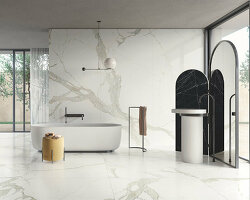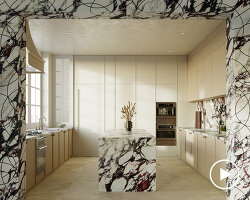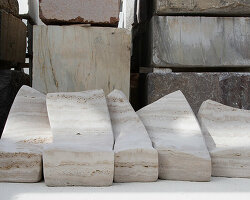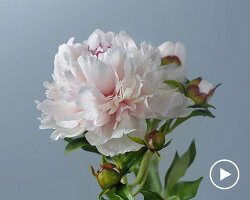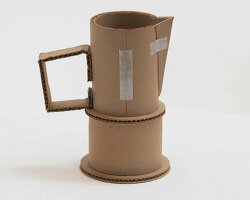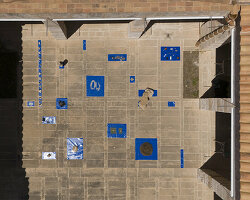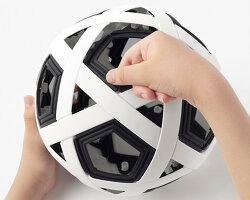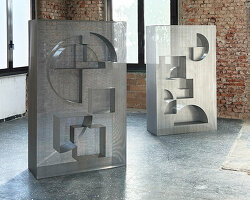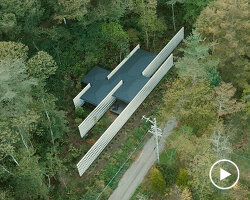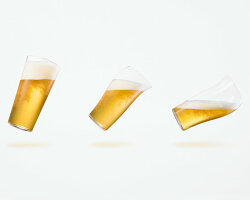nendo x Raku Kichizaemon Jikinyu presents ‘KICHIZAEMON X’
nendo has teamed up with Raku master potter Kichizaemon Jikinyu for ‘KICHIZAEMON X’ exhibition that comprises five captivating collections. Running from September 16, 2022, to March 11, 2023, at the Sagawa Art Museum, Japan, the display includes collaborative works from different artists and artisans, and the result sees a conjunction of colors, textures, materials, and techniques. Each piece is a reinterpretation of traditional Japanese pottery, unfolding different narratives behind it.
For example, the ‘chuwan’ series represents the passing of time, while the ‘michiwan’ series materializes the internal space of Raku ware. The ‘junwan -chroma-’ is a line of eight ceramic pieces completed by soaking them in ink to separate colors, the ‘junwan -redox-’ takes shape as a collection of three ceramic works fired after absorbing metal, and the ‘jihada’ is an installation piece that compromises five small spaces.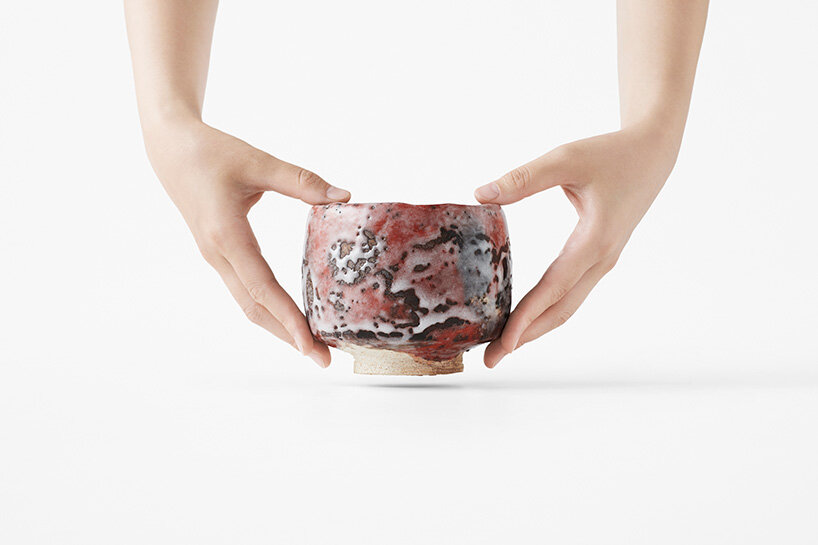
all images by Akihiro Yoshida | ‘chuwan’
KICHIZAEMON X introduces five enchanting collections
nendo’s new design for ‘KICHIZAEMON X’ is an exhibition series by Raku Kichizaemon Jikinyu in collaboration with artists and phenomena. ‘chuwan’ is a series of Raku tea bowls expressed in uneven symmetry. Raku ware is distinguished by the raw expression of its earthen material, performed by hand-molding instead of wheel throwing. This results in a more organic form distinct from the radial symmetry of a thrown bowl. To better showcase the artwork, the team opted for a floating display. To achieve this, they embedded multiple electromagnets and permanent magnets in the bowl, creating a mechanism that makes the piece float. Besides, a soft wind is blown from the stand toward the bowl, making it rotate slowly. When the visitors come closer to the exhibited pieces, they can perceive the glaze and unevenness of the surface. The project is titled ‘chuwan’ originating from chawan–Japanese for ‘tea bowl’— and chu, which means midair.
‘jihada’ is an installation that integrates tea bowls into daily life. ‘First, furniture pieces like bookshelves, drawers, doors, and windows as well as objects like dinnerware, picture frames, bottles, cans, books, and clocks were chosen. The objects were distilled to their forms and finished in a matte black to avoid any association with any specific, real lifestyle. These parts were assembled to create an ‘interior space in a minimum unit’ in which the tea bowl is inserted. Out of a desire to express the tea bowl’s integration in its environment, a segment of the bowl’s surface texture was 3D scanned and ‘replanted’ onto parts of the other objects. Winding waterways, rough mountainsides, the skin of a tree–by scaling the textures by 0.25x to 3x, the diversity of stories embedded in the tea bowl’s texture was accentuated. Ultimately, five different spaces were created, and the textures used in each were taken from their respective tea bowls. The resulting expression is as if the earthen skin (jihada) of the tea bowl has spread across its surrounding space, like moss or tree roots engulfing the environments they inhabit.’
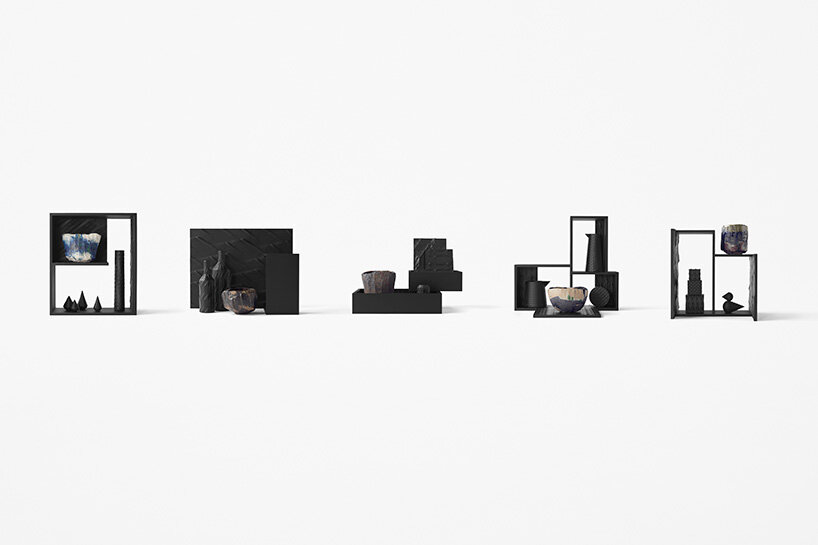 ‘jihada’ series
‘jihada’ series
infusing the bowls with inks, junwan -chroma-
‘Raku bowls are characterized by their soft, porous clay material and thick form. The ‘Junwan (saturated bowl)’ collection, which was introduced in 2022, was a collection of tea bowls that drew their own patterns by absorbing pigments. The concept was further developed by imbuing the bowls with water and water-based fountain pen ink.
First, ink lines are drawn on the bottom of the bowl. Next, the bowl is placed on a piece of water-soaked felt, and the pigments adhering to the bottom of the bowl gradually move upward, simultaneously breaking down into multiple colors. This is a method of separation and analysis of chemical mixtures called chromatography. It reveals that ink, which is usually thought of as a ‘single color,’ is in fact made by mixing multiple dye components. As for the process of pigment separation, the water is first totally absorbed into the clay, and next the water pulls up the dye. Dyes that are more compatible with water and can remain dissolved in water for a long time are pulled up to the top along with the water. On the other hand, the pigments that are more compatible with the bowl stay at the bottom because they settle into the clay at an early stage. The difference in ‘compatibility with water’ and ‘compatibility with the bowl’ is the mechanism that separates the pigments.’
‘Subsequent drying causes pigments hidden inside the bowl to emerge to the surface, but they collect on the fine convexities of the surface, generating further unevenness of color. In four of the eight bowls in the collection, the colors are separated largely in the vertical direction due to the bowls’ fine surface texture. The remaining four bowls have a rough surface, so the colors stay at the bottom and manifest in a speckled pattern. In this way, the various actions that occur between the three elements of pigment, water, and bowl create a unique expression. The individuality inherent in each tea bowl, such as the type of clay, the degree of firing, variations in thickness, and minute irregularities, was emphasized by the colors.’
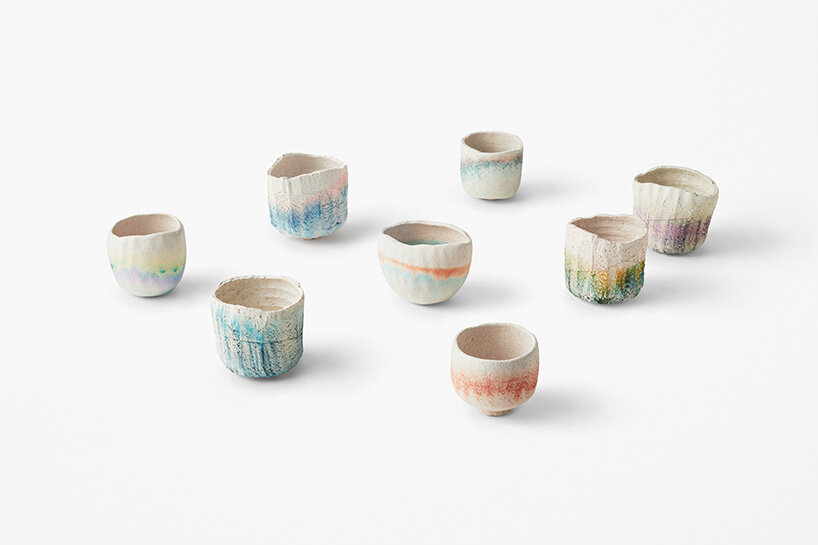
‘junwan -chroma-‘ series
burned after absorbing metal, junwan -redox-
‘The ‘Junwan (saturated bowl)’ collection was unveiled at an exhibition held in Kyoto in 2022. Its concept was to take advantage of the soft, porous clay and the characteristics of thickly molded Raku tea bowls so that the bowls draw patterns on their own surfaces when soaking up liquid. For the new design of Raku ware, bowls were finished by firing after absorbing an aqueous solution of metal ions and undergoing an oxidation-reduction reaction (redox).
Three kinds of metal ion solutions were used: iron, copper, and silver. The bowls were laid on their sides and soaked with the metal ion solution from one side and vitamin C from the other. When the two solutions touch each other near the center of the bowl, a redox reaction occurs, in which electrons from the vitamin C are transferred to the metal ions.’
‘This chemical reaction causes a banded color change. After drying, a transparent glaze was applied and the bowls were finished by oxidative firing. While the vitamin C burns and volatilizes, the metal ions and metal particles remain and combine with components of the clay and glaze to fix and develop their color. Typically, in pottery, iron oxide and copper oxide are mixed with glaze to color a pot’s surface, but this collection attempted a new technique of putting metal components dissolved in water inside the walls of tea bowls. At the same time, the remnants of the struggle between the metallic components and vitamin C appear as fluctuations in color and pattern on the surface.’
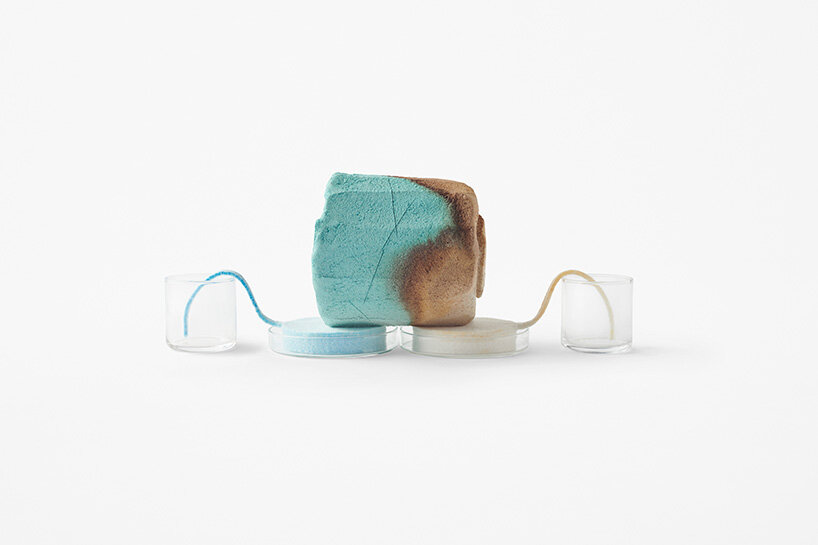
‘junwan -redox’ series
materializing the internal space of Raku ware, ‘michiwan’
‘One of the major characteristics of Raku ware, as exemplified by Chôjirô’s tea bowls created by Chôjirô, the first head of the Raku family, can be found inside the bowl. The semi-cylindrical shape of Raku bowl, especially with the mouth rim slightly held inward, gives an inclusive depth to the space inside. The deep inner space goes beyond its physical dimensions to hold a spiritual universe.’ says Raku Jikinyu, according to Raku biographies. ‘Nonetheless, the ‘internal space’ of a bowl could hardly be sensed under ordinary exhibition settings. With this in mind, the originally ‘hollow’ entity was reproduced as a solid mass by carving transparent acrylic based on 3D scanned data of interior of a tea bowl. Its name is inspired by its appearance as if water filled in the bowl was taken out as is.’
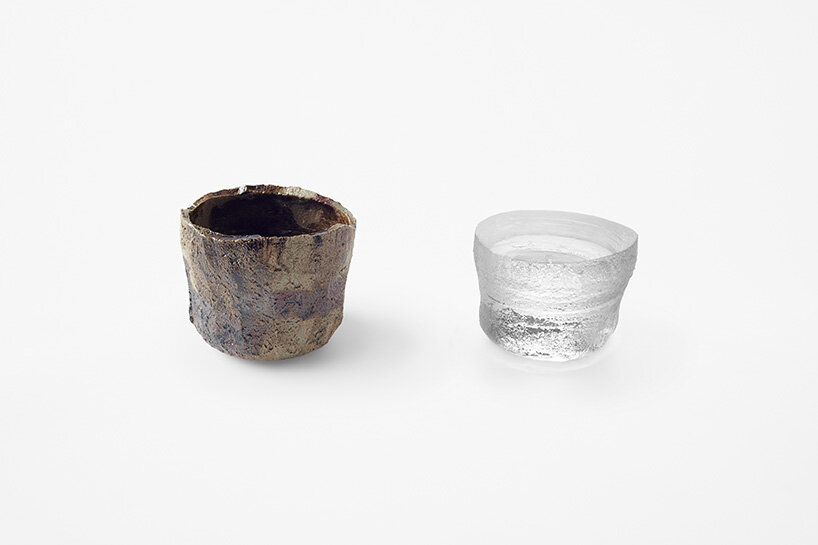
‘michiwan’ series
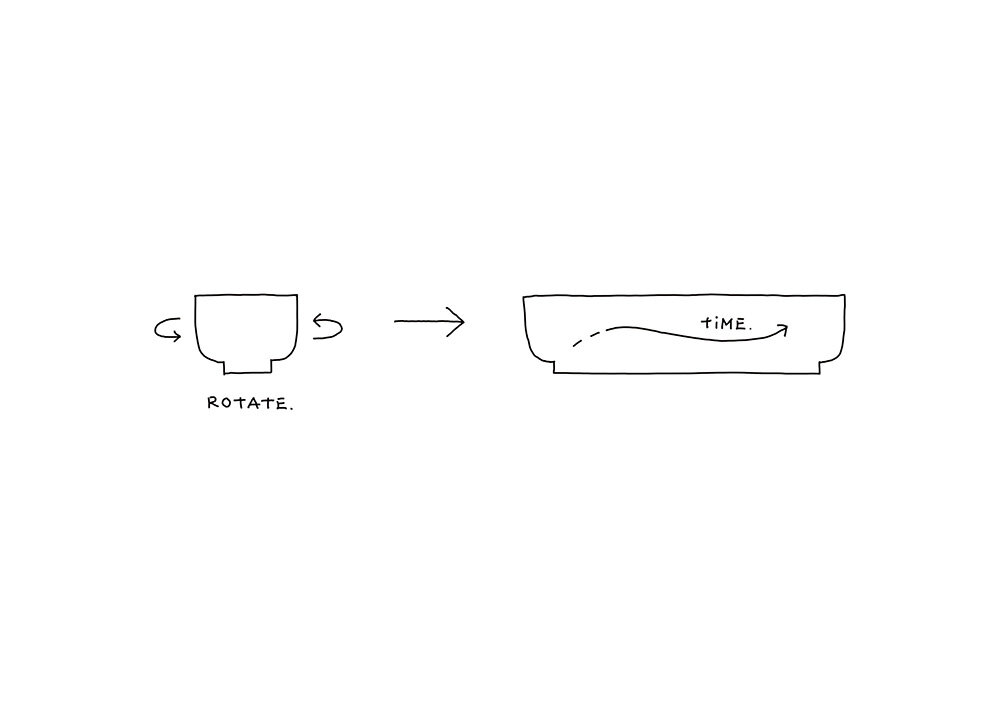
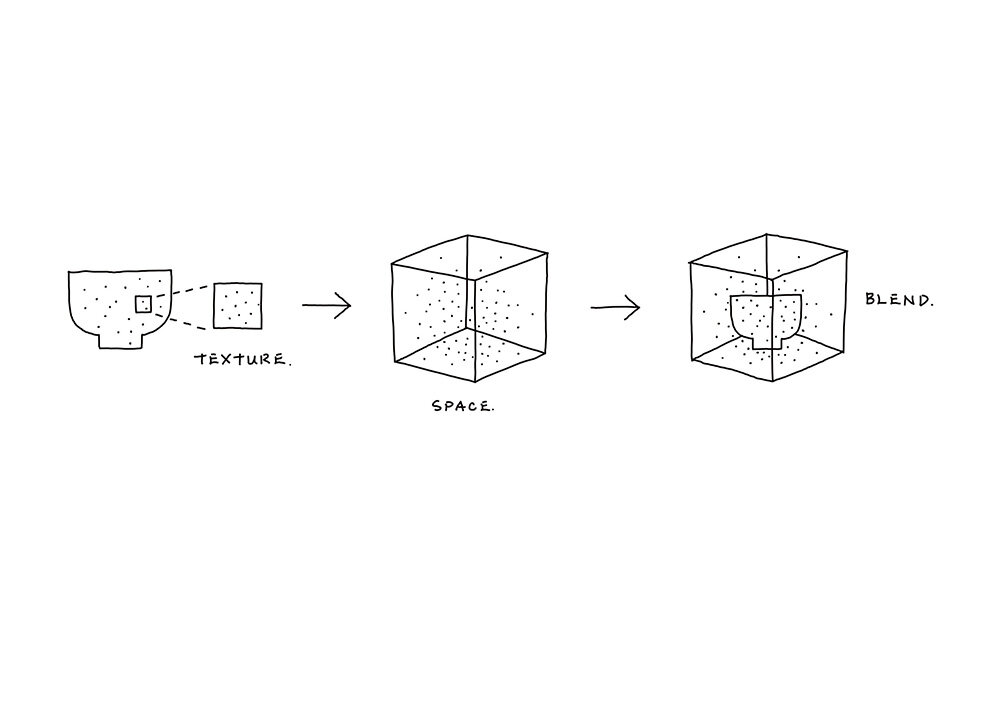
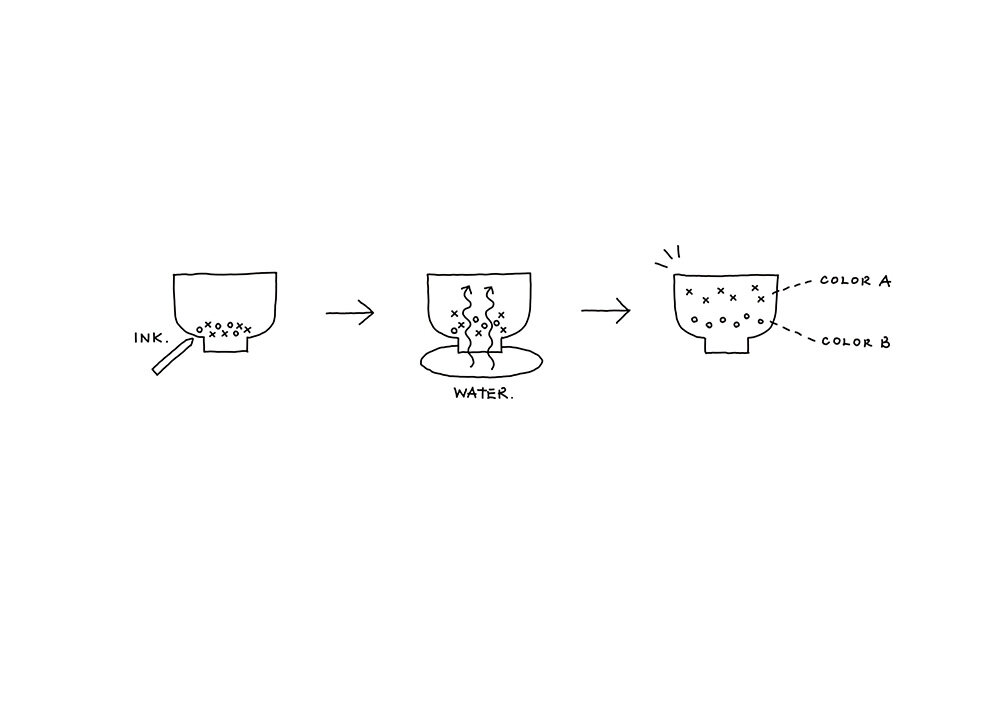
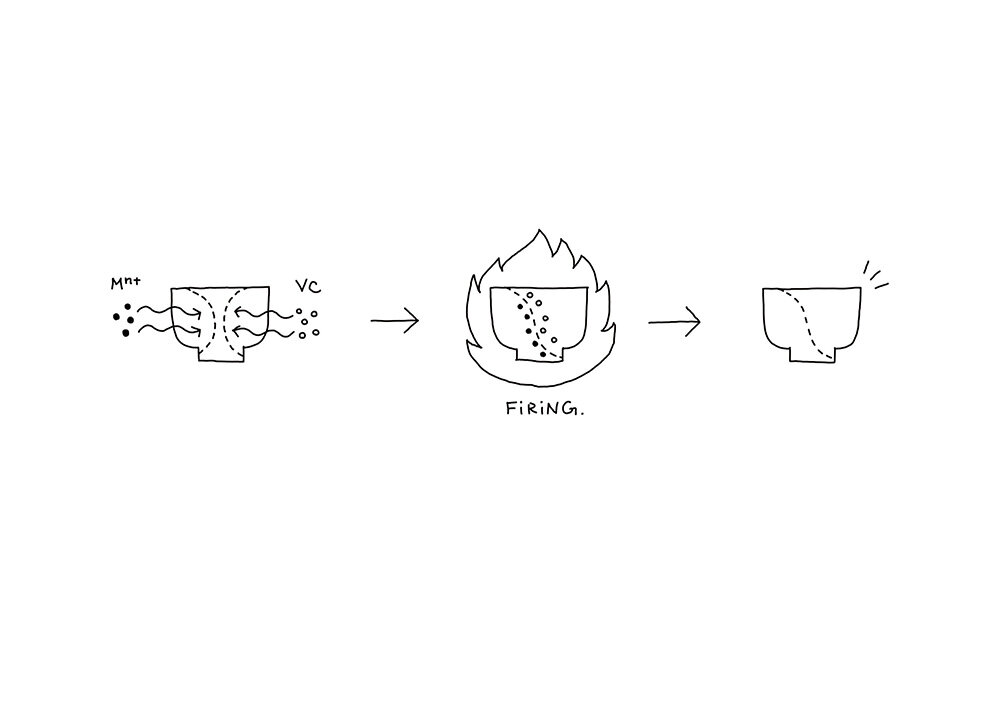
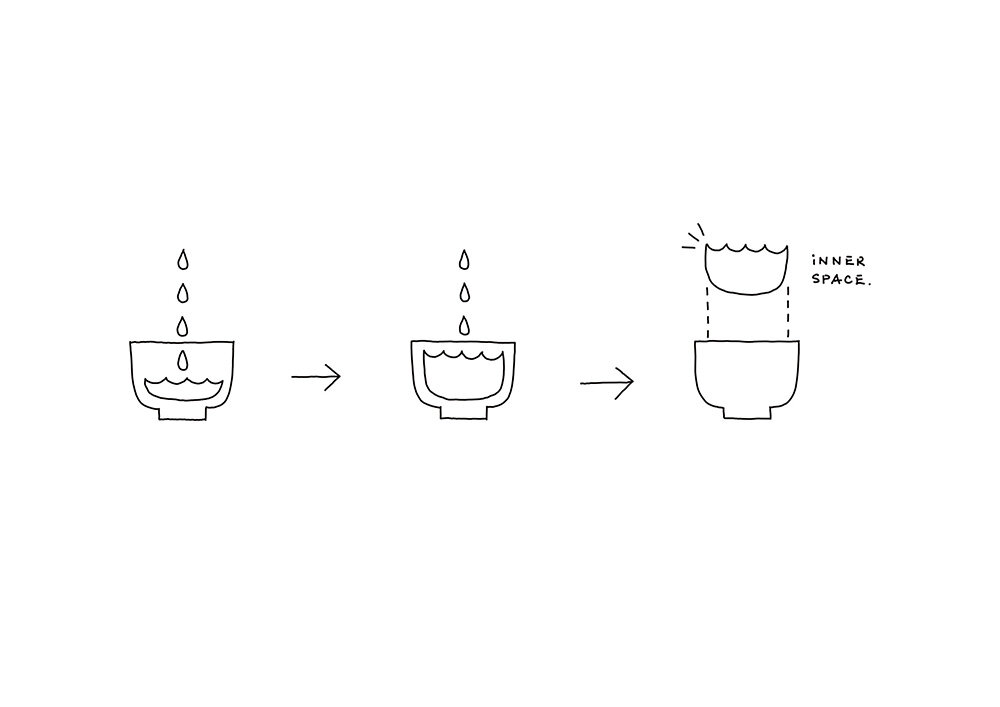
project info:
name: KICHIZAEMON X
designer: nendo x Raku Kichizaemon Jikinyu
client: Sagawa Art Museum
collaborator: Arata Nishikawa, Yushiro Yamanaka, Takahiro Fukino, Chihiro Yamamoto, Yosuke Matsushita
photographer: Akihiro Yoshida
videography and editing: Shimpei Mitani
ceramic art and design (169)
exhibition design (589)
nendo (271)
PRODUCT LIBRARY
a diverse digital database that acts as a valuable guide in gaining insight and information about a product directly from the manufacturer, and serves as a rich reference point in developing a project or scheme.
